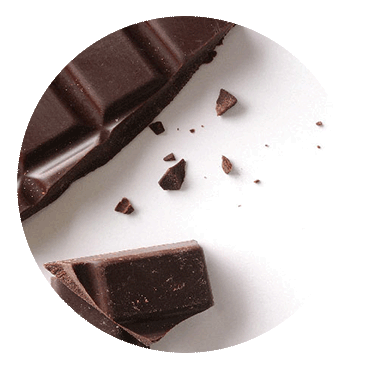Cocoa economics: understanding the value of chocolate
While those tiny chocolate bars are certainly tempting, Halloween isn’t known for its highbrow candy offerings. Kids might be happy to rake in bags of whatever cavity-inducing pleasures come their way, but grownups might consider taking a seasonal opportunity to treat themselves to something a little more sophisticated.
Chocolate has become a nuanced luxury good – one that lends itself to a wide spectrum of options, regulated tastings and pairings, and even talk of terroir. But for those who don’t have time to invest in chocolate as a full-blown hobby, we’ve asked some experts to weigh in on how to get the best bang for your buck when you’re shopping for high-quality goods.
Look at the Ingredients:
One of the best places to start when it comes to finding a high-quality chocolate is to flip the bar or box of bonbons over and take a look at exactly what’s been added. For Pam Williams, founder of the Ecole Chocolat in San Francisco, the equation is simple: The fewer ingredients, the likelier it is that you’re dealing with a quality product. “The ingredients should simply be cocoa bean – which can be stated as cocoa liquor, chocolate liquor, unsweetened chocolate, cacao mass, cocoa mass, chocolate fondant, cocoa beans, cacao beans, chocolate beans, cacao seeds, cocoa seeds, chocolate seeds – plus sugar, and maybe vanilla and lecithin.” For milk chocolate, milk powder is also a standard ingredient. Michelle Tampakis, owner of The Whipped Pastry Boutique in New York City, cautions consumers to keep their eyes open for added vegetable fats, which are often used as a substitute for cocoa butter in lower-quality chocolate.
Don’t Be Fooled by Packaging:
Many consumers are familiar with the percentage listed on the front of pricier bars of chocolate; it’s a scale that indicates the relative darkness of the product. But higher cocoa content does not necessarily mean a higher quality chocolate, says Williams. “The cocoa content only reflects the percentage of cocoa bean to sugar or milk powder in the chocolate, not the quality of the beans that were used to make it,” she says. “The percentage is only a guide to sweetness.” And while organic and fair trade certifications are tempting signifiers, they don’t always mean that you’re getting a high-quality product – only that the farmer has grown his cacao under a specific set of rules.
Check Out the Origins:
Cocoa beans are grown all over the world – from Mexico to Indonesia – and their core characteristic can vary significantly. “Just like wine, the bean type and terroir of the place where the cocoa beans are grown has an influence on flavor,” says Williams. “Some chocolates have a fruity flavor and some are nutty, for example.” Fine chocolates – because they tend to incorporate fewer ingredients – typically have a taste that is intimately tied to the cocoa beans used. “Mass market chocolate contains very little cocoa bean, so the quality of the beans is less important,” says Williams. “Their bars are made with bulk cocoa beans where low price, not flavour, is the focus.”
Don’t Bet the Farm on Bean-to-Bar:
The promise of “bean-to-bar” – often used by artisanal or “hipster” chocolatiers like the bearded Brooklyn-dwelling Mast Brothers – has become a buzz phrase in the world of high-end, typically pricey chocolate. But Williams cautions against identifying this as a clear sign of quality. “’Bean to bar’ only indicates that a chocolate maker is making chocolate from scratch from dried cocoa beans,” says Williams. “[But] all chocolate manufacturers and makers use the some general processes to make chocolate – including traditional fine chocolate manufacturers such as Valrhona, Felchlin and Guittard.”
Sample the Differences:
At some point, you might just have to get down to the hard work of trying various chocolates to determine your preference. Start by using all of your senses to detect the differences between bars. “High chocolate has a beautiful, uniform color, a "snap" when you break it, and an aroma that comes to the nose as soon as the wrapper is opened,” says Tampakis. “High quality chocolates retain nuances of berry or floral flavors, and have a long finish in the mouth, where the flavor lingers long after the chocolate is swallowed. Low quality chocolate often has no aroma, and the surface is dull.” Joanne Mogridge – who owns Cocoa West Chocolatier in Vancouver – offers this simple tip: “With high-quality chocolate, you’re going to get a chocolate taste and with low-quality chocolate, you’re going to get a sweet hit.”
Be Willing to Pay a Little More:
Like so many edible items, quality chocolate does not come cheap. “The best beans are expensive to begin with, and then the equipment that gives the best results is expensive too,” says Tampakis. Mogridge makes her chocolates on a boutique scale with organic ingredients – which is much more costly than mass production. Williams also raises the issue of sourcing sustainably to support both living wages and cacao biodiversity – which can also impact prices. “A higher priced chocolate likely means that it was made with higher quality beans that cost more for the chocolate maker to purchase,” she says. But, like fine wine, coffee or any other indulgence, Mogridge says that you get what you pay for. “If you’re going to indulge in chocolate, why not eat the best chocolate you can?”

